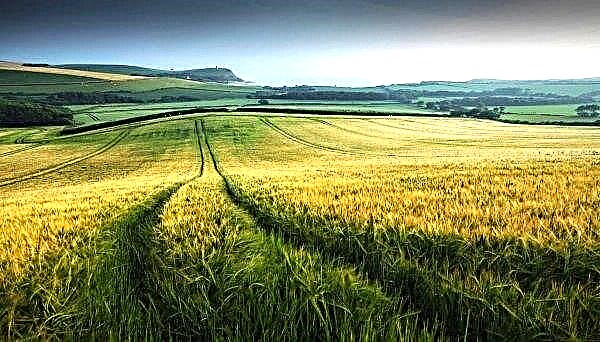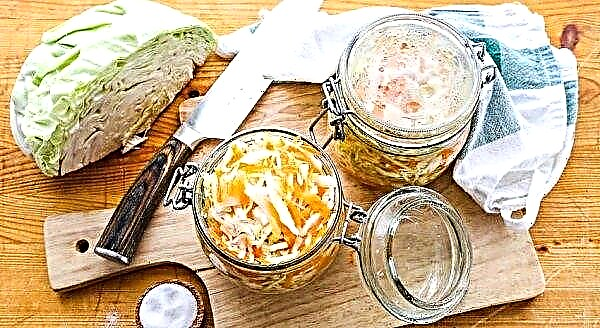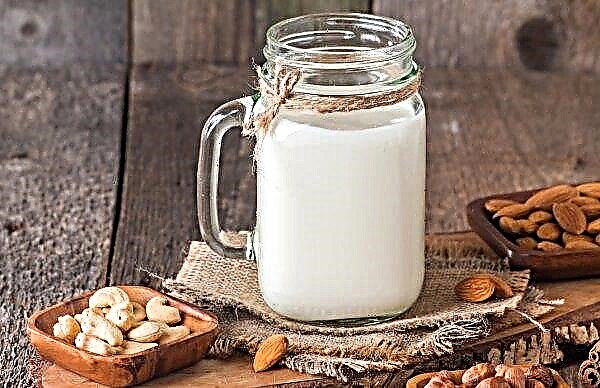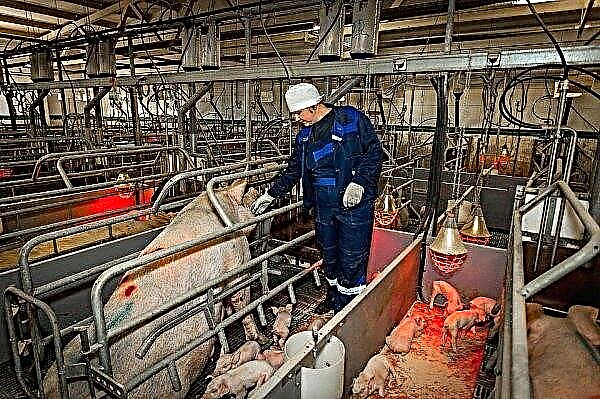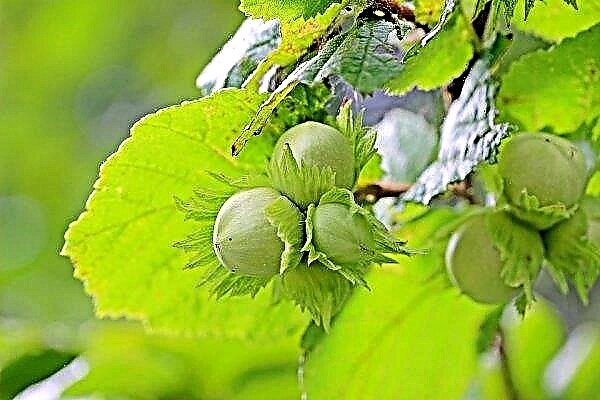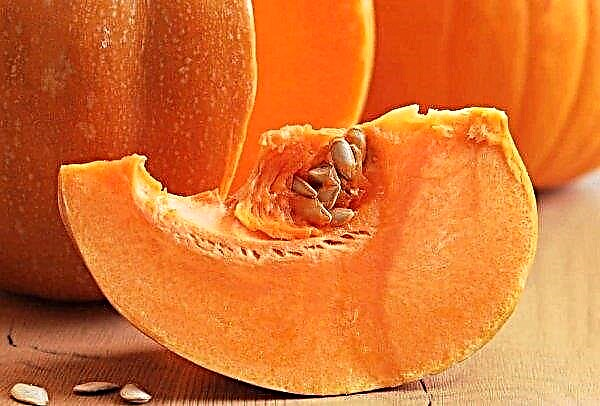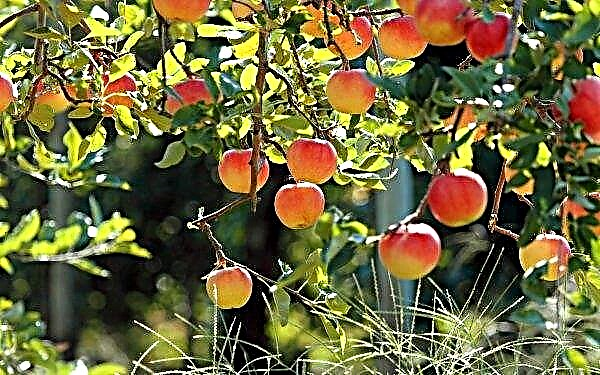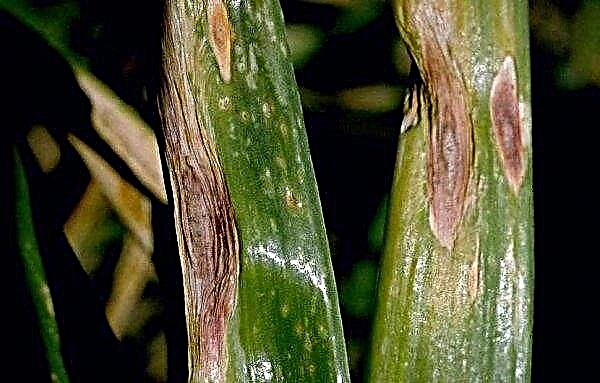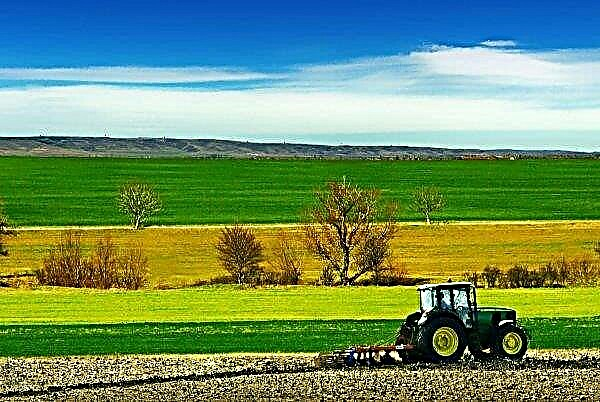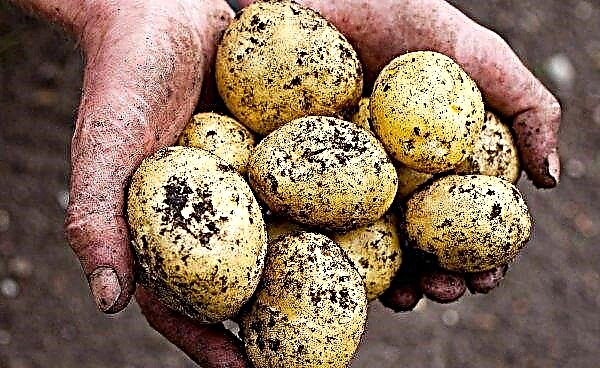Bushes of peppers on the windowsill look decorative and unusual. But this is not only a decoration, because its pods can be either pickled or canned, or used as a spice for many dishes.
Characteristics of hot pepper varieties
- Hot peppers are rich in various valuable substances, which explains their many beneficial properties:
- green pods contain 3 times more vitamin C than citrus fruits, and in red this indicator is 4–5 times higher;
- the capsaicin alkaloid (contained only in spicy varieties) gives the vegetable burning properties, it is used in medicine as an irritant, to fill gas sprays, as an insecticidal substance to combat various pests;
- enzymes contained in fruits positively affect the digestive tract;
- when consuming an acute vegetable, the amount of cholesterol decreases, blood circulation improves, and inflammatory processes pass;
- fruits relieve excess weight;
- useful properties are used in cosmetology (for example, for hair growth);
- the main industry of the vegetable is cooking: it is a part of adjika, spicy marinades, hot sauces of Tabasco and chili, as well as the popular Indian curry.
Did you know? Some types of canaries are specially fed with cayenne pepper due to which the wings of birds acquire a more intense color.
Selection of hot pepper variety for growing
The best varieties of hot pepper for growing at home include:
- Twinkle - This is a mid-early variety with long bright red fruits. Peppers are a bit large (up to 50 g), but are quite suitable for indoor cultivation.
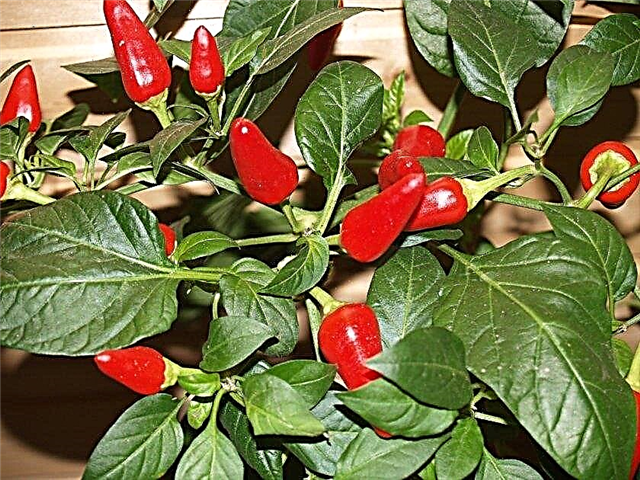
- Jellyfish - refers to early ripening varieties and has low (about 20 cm) bushes. Fruits are oblong and slightly curved, up to 5 cm long, as they ripen, their color changes from yellow to red.

- Bell - got its name because of the original shape of the fruit (it really resembles bells), which, upon reaching technical ripeness, turn scarlet. Peppers grow to weigh up to 60 g. The core of the fruit has a burning taste, and the shell is less sharp.

- Aladdin - One of the ultra-early varieties, characterized by high productivity. The height of the plant is about 40 cm. The bush is abundantly dotted with cone-shaped fruits, which at first have a cream or purple color, which gradually turns red when ripe.

- The Queen of Spades - Suitable for growing all year round. A plant up to 20 cm tall is dotted with colorful pods that change color when ripening from green or purple to red or yellow. Peppers are used not only for various sauces, but also suitable for salting and pickling.

- Poinsettia - It has a very sharp taste. The bushes grow up to 35 cm, and the pods grow up to 7.5 cm. Red fruits are placed at the ends of the branches in bunches, which gives the plant an unusual decorative effect.

- Nosegey - a very compact plant with a height of no more than 15 cm. Miniature round pods change color several times: from green to yellow or cream, and then to red. The taste of fruits is moderately spicy.

Preparing seeds for planting
Sowing seeds for growing pepper on the windowsill is carried out at the same time as for growing in open ground, and this is the second half of February.
Seeds germinate longer than other vegetable crops, therefore, to accelerate this process, it is advisable to prepare them:
- You can fill the seed material, placed in a thermos, with warm (about + 40 ° C) water and leave it for 2-3 hours.
- For disinfection, the seeds can withstand 15–20 minutes in a 1% manganese solution. After the procedure, they need to be washed well.
- Soaking for 1–1.5 days is practiced in growth stimulants (Epin (4 drops per 200 ml of water), Energen (10 g per 200 ml of water), Bud (1 g per 1 liter of water)) or in aloe juice (5 ml per 200 ml of water).
- After all the manipulations, the seeds are placed on a damp cloth (cotton or bandage) and kept at a temperature of + 20 ... + 25 ° C until they are pecked. The fabric must always be kept moist so that it does not dry out. Instead of water, you can use a solution of ash (1 tablespoon per 1 liter of water).

After such preparation, the seeds will germinate within a week. After pecking, they can be carefully planted in prepared containers.
Optimal conditions for growing hot pepper
In order to grow peppers at room conditions and get a plentiful harvest, you need to create the most favorable conditions for plants. Let us examine in more detail all the subtleties of this process.
Capacity for landing
The root system of pepper is quite compact, it is located in the upper layers of the soil, therefore, for growing a house, capacities of about 3 liters are quite suitable.
Depending on whether sowing is carried out with or without picking, different containers are selected:
- Rectangular containers (up to 5 cm high) are used for sowing with further picking. Subsequently, seedlings are transplanted into individual containers of larger size (with a diameter of about 8-10 cm), and then to a permanent place. In the process of picking (in the phase of 2–4 true leaves), the roots of the seedlings are pinched to 1/3 of the part. The plant is buried to cotyledon leaves.
- Without picking, seeds are sown in individual plastic cups or peat pots. Then, by transfer, they are transferred to permanent containers. The earth is also sprinkled with cotyledon leaves.
- For a general planting, the seeds are sown in furrows with an interval of 2 cm, and for an individual planting, 2-3 seeds per cup. The embedment depth is about 1 cm.
- Seedlings are transplanted to a permanent place of growth when they reach a height of about 12-15 cm.
- When planting with a pick, sowing of seeds is practiced in mini-greenhouses, which are used as large (5-6-liter) plastic bottles, cut so that the bottom and lid are formed. In such conditions, the soil does not dry out, and raising the lid, it is convenient to ventilate the seedlings.
- Peppers do not tolerate picking, transplantation is more suitable for them. Such cultivation accelerates the ripening period of the crop by 2 weeks.

Vegetables will grow for a long time on the windowsill, so clay containers should be preferred.
Suitable substrate
Peppers need nutritious, light, acid-neutral soil. You can purchase the substrate in a flower shop, or you can cook it yourself.
Did you know? For hot pepper there is such a rule: the finer the pod, the higher its hotness. There is even a pepper scale. unit of measurement — SHU. Bell pepper has zero severity (0 SHU), and the sharpest varieties exceed the figure of 2,000,000 SHU.
Here are a few options for earthen mixtures:
- peat with mullein in a ratio of 9: 1 (for seedlings);
- 2 parts of humus + 1 part of compost and sand + 1 tbsp. ashes;
- 2 parts humus and sod land + 1 part sand;
- humus, turfy earth and mullein (7: 2: 1).
The bottom of the tank is covered with a layer of drainage from rubble or expanded clay (2-3 cm).

Temperature and lighting
Pepper is a big fan of light and heat, so it is advisable to adhere to certain rules:
- Until the seed germinates, the containers must be at a temperature of + 23 ... + 26 ° C. If the containers are not covered, then the ground should be periodically sprayed with water to prevent the formation of crusts.
- When the seedlings appear, the temperature must be reduced to + 15 ... + 17 ° C for a week. This will prevent the seedlings from stretching and make them more resistant to stress. Later, they adhere to the following temperature regime: during the day - + 23 ... + 25 ° C, and at night - + 16 ... + 18 ° C.
- For normal growth, plants in winter need a temperature of at least + 18 ° C, and in the summer - around + 20 ... + 24 ° C.
- For cultivation, it is better to give preference to the windowsill on the south or southeast side. In summer, you can take to the balcony or loggia, but drafts should be avoided.
- Peppers need 12-15 hours of lighting. Especially there is a lack of light from November to March. At this time, you need to organize artificial lighting with LED, fluorescent or phytolamps.
Important! Lack of light can affect the color of leaves (turn pale), as well as lead to their dropping. And the temperature is above +30°C causes flowers and ovaries to fall.
Air humidity
For peppers to grow well, you need to maintain humidity at 65–75%. With dry air, spraying is practiced.
Features of home care
Seedlings about 2 months old are transplanted into permanent containers in which plants will be grown in the future. If the soil is depleted, then it is possible to transship the plant into a large tank with the addition of a nutrient substrate. 
It is also possible to replace the topsoil in the pot. Pepper care consists in timely watering, fertilizing, forming a bush and combating diseases and pests (if necessary).
Watering
The issue of watering peppers also has its own subtleties:
- You can not pour cold water, it must be at room temperature, soft and settled.
- Seedlings cannot be over-moistened, since a black-leg disease can occur that can destroy the entire seedlings. For prevention, dusting of the soil under crops of wood ash is used. This will also serve as additional fertilizing.
- Watering is carried out as the topsoil dries. It is better to water in the pan, but so that there is no stagnation of water in it (if there is water in the pan half an hour after watering, then it must be drained).
- Watering becomes more frequent if the ambient temperature rises.
Top dressing
This culture depletes the soil, and in order not to transplant it every year, fertilizers are used. Adult plants are fed once a month. To do this, use mineral and organic fertilizers, and preferably complex.

The following options apply:
- for mineral top dressing per 10 l of water, you can use 30 g of superphosphate, 20 g of ammonium nitrate or 25 g of potassium sulfate (optional);
- as organic fertilizer use a solution of chicken droppings (1:10) or mullein (1: 4), which is incubated for 5-7 days, and re-diluted (1 l per 10 l of water) before use;
- mineral dressings alternate with organic matter or apply complex fertilizers (as the latter they use Kemira Lux, Agrolife, Agricola, Rostock and others, according to the instructions);
- spraying with the drug "Ovary" has a positive effect on increasing the number of ovaries and fruits;
- the most common fertilizer is a solution of ash (2 tablespoons per 3 liters of water), which is used with an interval of 2 weeks.
Formation and pollination of a bush
Varieties of paprika are usually quite compact, so they do not require pruning or pinching.
Important! Varieties of hot pepper for indoor cultivation are mostly hybrids capable of self-pollination. But if there are problems with this, then the branches with flowers need to be shaken several times or using a brush to transfer pollen from one flower to another.
But since the plant growth period is quite long, the following actions can be carried out if desired:
- to enhance the branching of the bushes upon reaching a height of about 20 cm, pinch the top of the plant;
- every 3 years the bush can be rejuvenated, improving its decorativeness, old shoots are cut for this purpose;
- when trimming pepper, shoots that grow inward and those that have already carried away are first removed;
- at the beginning of flowering, the first bud located in the branch of the stem is removed.
Sometimes, to preserve species qualities, cuttings are practiced. Cuttings are harvested from young, not yet flowering stems. Their length is about 8 cm.
Pest and Disease Control
If a plant is grown in a room, this does not mean at all that it is not afraid of disease, and even less so of pests. Among the misfortunes to which pepper can be exposed, the most common are:
- Aphid - very fond of young leaves and shoots. In order to combat it, they are sprayed with drugs such as Fitoverm or Bitoxibacillin.

- Spider mite - causes curliness of young leaves, covered later with a cobweb. A consequence of a tick attack is the arrest of the growth and development of the plant. In the fight against ticks, the same biological products are effective as in the fight against aphids. Tobacco, scattered on the ground in a pot, also serves as a good remedy for ticks.

- Vertex rot - for the prevention of the disease, spraying is used with a 0.2% solution of potassium nitrate.

- Blackleg - it affects seedlings in the early stages. This comes from waterlogging. For prevention, the Previkur fungicide is used.
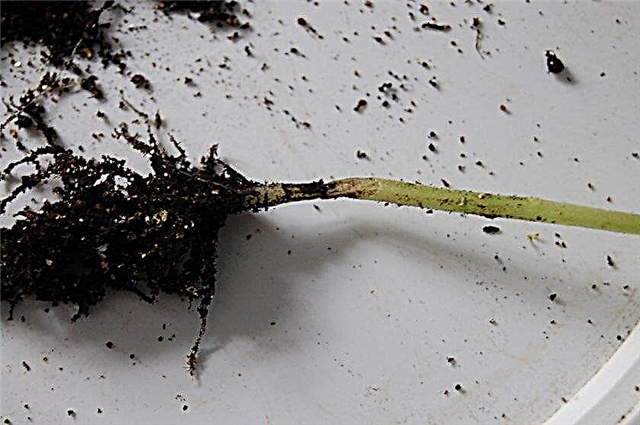
Harvest
Pepper begins to bear fruit, depending on the variety, in a different period, but most often it occurs 100–150 days after emergence. Do not overexpose mature pods on the bush, they need to be torn together with the stem, so that they do not pick up nutrients. With the timely collection of fruits, new flowers and ovary are formed in place of the plucked pod.
For long-term cultivation of pepper, it is advisable to remove the first flowers in order to give the plant a strong grow. Having learned how to grow pepper on your own from seeds, how much it grows at home, and what its benefits are, you may have a desire to start growing it at home.












